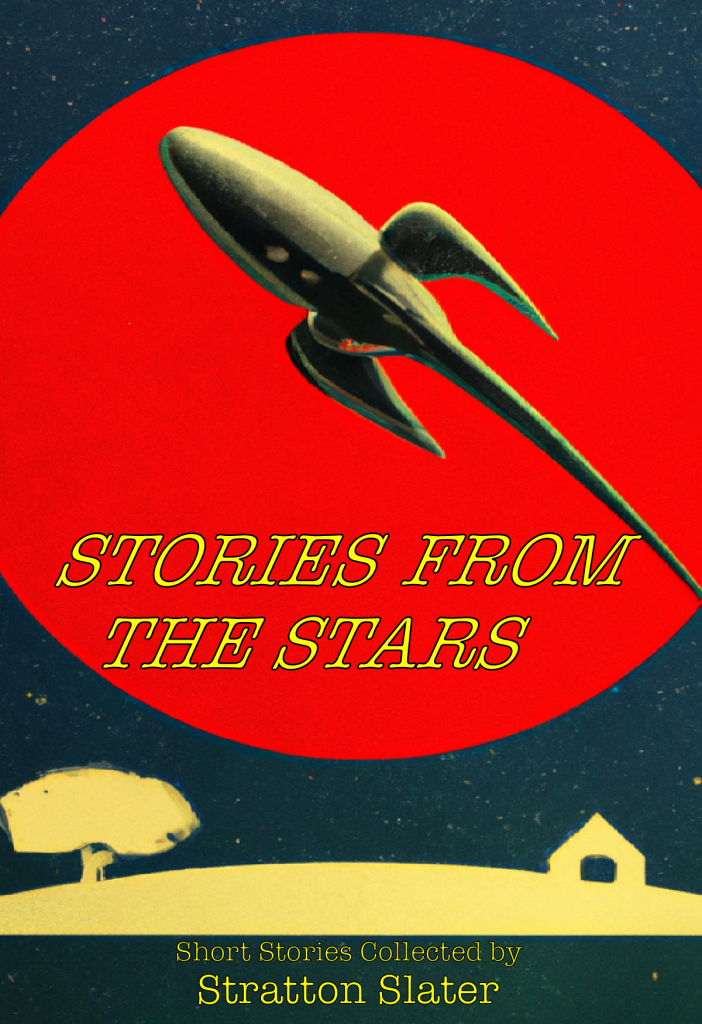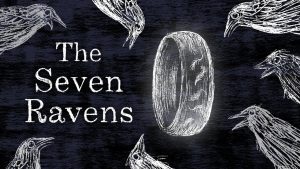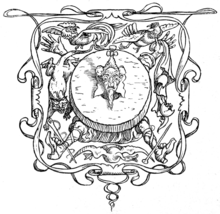Peacemaker EPUB
The link to my EPUB: https://dtc-wsuv.org/sbaxter21/dtc-338/
The Death of Poe (Publication Project)
Devon Baxter – Public Domain Publication
10/4 Post
Multimedia, hyperlinks, interactivity, and sharing are absolutely a huge part in how we use texts today. Hayles says, “But with the shift, serious incompatibilities arise between the expectations of educators, who are trained in deep attention and saturated with assumptions about its inherent superiority, and the preferred cognitive mode of young people, who squirm in the procrustean beds outfitted for them by their elders.” In the past curriculum was taught as though you were only going to be fixated on one piece of information at a time. In current times, that’s just not how the world works. It would be interesting to see the statistics now on how many students do their homework without listening to music or watching YouTube/Twitch. I think that these things are for sure distractions, however the book will always be there for people who want to read.
I’ve noticed my attention span is lower, especially for digital reading. I have access to anything I want no matter what time of day it is. I do love to read physical books, but that feels like a completely different thing than reading them on the web or mobile devices.
The DTC book is mostly what I want to see in a digital textbook. It has just the right amount of information that is subsidized with interesting hands-on videos and activities. The book also has a great table of contents that lets you easily find anything you want.

Reading Multimedia Texts
Reading on a screen has changed dramatically with the integration of different media. However, multimedia reading is best when the interactive elements are optional. For example, Wikipedia contains online pages that describe a specific topic in detail. The website does use interactivity, most often exemplified by hyperlinks to other relating articles, but these are optional and not distracting. These hyperlinks provide context and more information for those that want to learn more without being intrusive. However, a website that contains media that is not necessarily avoidable is very distracting, like music that plays in the background automatically. The concept of making multimedia aspects of reading optional has also proved beneficial in my classes. While reading an article that contains a video, I am able to focus much better if the video does not automatically play, as I am able to read the writing at my leisure and then choose to watch the video if I need more information instead of being distracted by it. The concept of making multimedia aspects of digital works optional is bolstered by N. Katherine Hayles, a digital media scholar, in her article “Hyper and Deep Attention: The Generational Divide in Cognitive Modes“.
Stimulation works best, in other words, when it is associated with feelings of autonomy, competence, and relatedness—a conclusion with significant implications for pedagogy.
As per Hayles’ claim, the interactive aspects of media is best presented as something the user has control over.
Many of my habits have changes dramatically due to multimedia applications, and my reading habits are no different. Due to the prevalence of fast, short-lived media online, I find it more difficult to focus on longer forms of writing. While I have always loved reading fantasy books, I now find myself more inclined to reach for my phone instead of a new novel because it is easier for my brain to process.

Thea Hieronymus – Reflecting on Hayles’s Essay
To me “screen reading is” just reading something on a screen, instead of on a physical piece of paper. “Screen reading” might also be defined as or looked at as a sort of skimming. I think that when people read more on a screen the less information they take in vs when it’s in their physical hand. Kind of like writing. You retain more information when you write stuff down than when you just type it up or copy and paste it.
I think that multimedia, hyperlinks, interactivity, and sharing essentials are part of the way we use texts today. I believe this because it draws more people in on reading on screens. With hyperlinks, it helps provide previous information on other things that might be relevant. Interactivity gives you the ability to learn and read things from a different aspect. I will say I can see and understand how multimedia, hyperlinks, interactivity, and sharing essentials are a distraction. These things can also take us away from the reading where we end up getting distracted and not finishing the book, or getting distracted and thinking the reading was finished when in fact it was not, there were just too many things going on.
From what Hayles has to say in the essays I really like when she brings up the question “How does media stimulation affect the brain?” (192). This really got me thinking about all the ways that media and our exposure to media have affected our day-to-day life. Not only with just digital reading but with everything from social media, to watching shows, and even just texting someone. We all know that technology affects us and our brain function somehow. Hayles goes on to elaborate that “Children growing up in media-rich environments literally have brains wired differently from those of people who did not come to maturity under that condition” (192). As time has gone on and technology has developed children are getting more and more access to technology. But with that technology is really helping them focus and work on things.
“As students move deeper into the mode of hyper attention, educators face a choice: change the students to fit the educational environment or change that environment to fit the students.”
– Katherine Hayles (195)
As I have grown up my reading habits have really changed right alongside my writing habits. With reading, I will say I have never really been “into reading” but when I did read when I was younger it was always like hard copy and book form. But once I started high school to college my reading was really only based on the school. But this is when my writing changed in high school we were given tablets and all of our work was done on that. Teachers didn’t require notebooks anymore, they were recommended but not required anymore. That is when my writing changed and it became mostly digital and less physical.
I think over time my writing has really changed and improved but my reading “level” has probably lowered due to digital reading and multimedia learning.
Multimodal Publishing Post
In my case, screen reading has multimedia aspects and hyperlinks with if there is like a word that I do not understand, I can easily look it up and learn more about it. For the many readings that I have to do for school, some have ways for me to end up going a little off topic and accidentally read something different from the main topic rather that a book where I just keep moving forward in the book.
For reading habits they have somewhat stayed the same with me reading with a few skims around where I read. If I enjoy the content of the story then I would take more time reading it and dive deeply into it. It does not usually matter if it is online or book form if I want to read it, but if I cannot enjoy the story then I do more skimming than usual. For online reading it is more on the skimming than reading so that would be the biggest difference of the story. While for school reading my habits just like what Hayles said about schools in her paper, “Educational institutions have specialized in these environments, combining such resources as quiet with an assigned task that demands deep attention to complete successfully.” Schools taught me how to find certain information and giving me good resources to find things for research. I do also like images in my readings because they usually help me understand what I am reading and puts the words into a visual perspective.
The Death of Poe, the public domain publication project
The people in my group are: Benjamin Peterson, Devon Baxter, Jianys Berrios, Rich Te, and myself (Jessica Unruh). Together we worked to compile our collection of stories that we centered around Edgar Allan Poe. It was influenced by the initial halloween theme we were discussing. In our publication are three stories, one poem, and a story with a poem. Each person contributed their own entry into the anthology; I added Poe’s poem “The Raven.” From there, we collectively decided on the story placement, and discussed different ideas on what to include in the front matter, what our title should be, and our publishing group name.
Images and typography in my version of the publication leans toward a more abstract or surreal nature. My font choices are meant to be read easily without losing a sense of style. The images are meant to stimulate the imagination of people who read the stories. That said, I unfortunately could not get my images to show correctly on Apple’s Books. They show fine in other e-pub readers, however.
Hot off the presses, it’s STORIES FROM THE STARS
Come one and all to read the latest in spectacular science-fiction stories! Collected from perennial classics across time Stories from the Stars is a collection of fantastic science-fiction tales of space travel, alien invasion, and encounters from beyond the stars!
Assembled by Stratton Slater and including the latest in digital illustrations from the futuristic machine intelligence known as DALL·E 2, this collection is sure to delight, amaze, and enthrall readers of all ages.
Get your copy today, supplies are unlimited!
Posting with hyper-deep attention
Hayles bring up many interesting points in her article Hyper and Deep Attention: The Generational Gap in Cognitive Modes. I particularly appreciated her attention to AD/HD and how that can be viewed as a parallel to shifting patterns of cognition. (I also appreciated her footnote at the end explaining the difference between the old ADHD and AD/HD)
There is a specific aura associated with high academia, ivory tower, type institutions. There is the image of the frazzled undergrad passed out a library table, surrounded by a dozen reference books while they study for a final. This is the image I believe most individuals associate that image of intense study. Halyes describes that “deep attention … in academic settings is the defacto norm” This study of a single topic to the point of exhaustion is viewed as Real Learning (capitals because it’s very serious) and that there is something lost with other modes.
I think that hypermedia, interactivity, and sharing as components of a text are something that is become more popular but I would say it is essential or integral yet. There are tools like Perusall that work to create public annotations and discussions within a shared reading space, but these are third-party commercial tools, not integrated parts of the learning experience. For my personal study I tend to use a variety tools and interfaces including my laptop, physical copies to highlight text, and my cell phone for quick references. In theory all of those things could be accomplished through unified digital interface.
However the affordances of each item are unique; I am writing this on a laptop with the printed essay in front of me, I have a second screen displaying the prompt for reference, and I took the picture with my cell phone while texting a friend if we are going to meet on campus before class. All of these interfaces afford something unique but they are not all electronic, and frankly I think they fact they are not integrated is useful because it splits up the purpose of each item meaning the work done on each will be focused.
Something I think about that relates back to the DTC major in general is how certain interactions with media are privileged as “better” than others. Hayles mentions this concept in relation to cognition “The riposte is obvious: Better for what?” and I think that is an excellent response. I might stray to being a little broad here but western society is obsessed with classifying, quantifying, and categorizing all kinds of things. Americans in particular are ever searching for “the best one” of whatever tool, idea, opinion, or what have you they might be interested in at the moment. This relates to the concept of forming hierarchies of which mode of cognition is “best”, because I don’t think is a “best” mode cognitions. I believe the reality to be that the best mode of cognition is the one that works for the person cogitating.
This of course does not fit into line with determining which mode of focus is superior, because the answer becomes subjective, which is a terribly unsatisfying answer.
Overall I think that this essay addresses an important point about changing standards and modes of cognition and how those modes are formed in the first place. I was born in 1994, I got most of my K-12 education from books and papers, with a shift towards digital technology coming around the last 5 or so years I was in school. The bulk of my education since high school has been hybrid but I think the reality is that even the digital interfaces I have used for learning emulate the affordances of the book.
While there are some electronic elements, there isn’t much true interactivity to illustrate examples, no moving graphics to show scientific concepts, and no single interface that packages and presents all of these things together. Admittedly tablet computers such as the iPad are working towards this, those things remain luxury items and the alternatives have frustrating limitations. I think there is a great shift that has already happened and more coming in the ways that humans learn, teach, and interact with knowledge.
Devon Baxter – Hayles essay on Hyper and Deep attention
Screen reading to me is reading on a screen as opposed to a physical book. Not every single textual element on a screen fits within this definition. Screen reading software is not screen reading. But can fit within this definition where the speech can read the text and say the word out loud.
The media elements are very essential to the web-based articles and blogs that we see today. The elements allow us to learn more about the topic that we are reading. Links allow us to expand on the topic using an external source.
Depending on the perspective that is someone views, this it can be a distraction, and it is not a distraction at the same time. The essay says “The researchers measured the effect of video games on what psychologists call “executive attention,” the ability to tune out distractions and pay attention only to relevant information “a person could tune out unnecessary information but if the book is not relevant or interesting, it could pose a problem. A book does not have these elements, so it immersed the reader in just the text that they see in front of them with no supplemental information. All the information should be in the book. In an electronic format, the elements such as hyperlinks act as supplemental information to the reading, whether the information is present. Screen readers do not exist in the physical books, but they get distracted by page numbers and images when they are present, so I would think the screen reader itself could get more distracted than the actual reader in that case. Some people could get lost with the hyperlinks if the supplemental information is too large. So, the reader might want to read the supplemental information, especially if the supplemental information has hyperlinks that continue to supplement the information that they are seeing taking away from the experience of the original work they were reading. So yes, they can if you get too immersed in the content.
My reading habits have changed drastically, as most of my reading is electronic, as I did a little reading in the physical realm. I went from reading the physical text but since the constraints as a university student or a student distract me from actually reading and taking in the content because I am focused on just getting through the reading and not reading the content. I have learned some things that have helped me in reading both mediums as I was not actually engaging with the content fully, whether it was because I did not like the content or because the medium was distracting. After reading a variety of texts, some I needed to work around in order to even read. I learned how to be a better reader. This article was interesting as well because I could relate it to everyday life. The essay says that the study of 8-18-year-old’s “shows that the average time young people spend with media per day is a whopping 6.5 hours—every day of the week, including school days.” I would say that the information is accurate, especially as a college student who looks at screens for 8 hours a day doing readings and typing papers, it is accurate. Not to mention other forms of media consumption per day.
Specific ideas that I have are a brief paragraph supplemental information and not just links to articles, as that should stop the node-based distractions that come from the articles with supplemental information. Audio features allow us to read the book like a podcast. Books that come with notes on the information in note form we don’t need to read the entire book to get the supplemental information, so experts make book notes so that the important information is there.
Screen Reading Impacting Attention
To me, screen reading does include multimedia aspects and hyperlinks. Much of the reading or research I do for school involves web searches and interactivity. If I were to read a Wikipedia webpage, I expect to see the blue hyperlinks that I can click on to learn more about other topics. While these are what I am used to and having more information accessible at a click is convenient, it can also lead me down a rabbit hole of information. This can cause a distraction and lead me away from my initial research. With a traditional book, I would have no choice but to continue reading the content on the pages because there is no opportunity for me to go to a different course.
With mobile and web reading, I find myself wanting a quick read compared to reading something with 50 pages. A short article that gets straight to the point and gives me all of the information I need so I can continue to something else is what I prefer. In the scholarly text Hyper and Deep Attention: The Generational Divide in Cognitive Modes, author N. Katherine Hayles explains different types of attention. “Hyper attention is characterized by switching focus rapidly among different tasks, preferring multiple information streams, seeking a high level of stimulation, and having a low tolerance for boredom”, while “deep attention, the cognitive style traditionally associated with the humanities, is characterized by concentrating on a single object for long periods (say, a novel by Dickens), ignoring outside stimuli while so engaged, preferring a single information stream, and having a high tolerance for long focus times” (187). While reading this section, I recognized that I have hyper-attention. There is also mention of having other stimuli while working, such as music, which is familiar to me. I always listen to music while I am working on homework or drawing.
To help me engage with digital books, I think that continuing to have certain words connected to dictionary definitions is helpful. It saves time so rather than going to look up the word, it is an easy click. This also pushes me to learn to look at definitions because there aren’t multiple steps. Having links to other parts of the book is helpful as well. In the table of contents, I prefer to be able to click on what chapter I need to go to.
A Discussion on Hyper and Deep Attention
When I look at the phrase “screen reading” I immediately begin to think of someone reading a digital text rather than a printed one. In my opinion, the use of this phrase also describes what reading is like for most people nowadays given that there is more accessibility with digital texts than with print. Now, when it comes to multimedia, hyperlinks, interactivity, and sharing I find that they have become essential parts of the way in which we use texts today. However, although I believe this to be the case I cannot entirely dismiss the idea that they are distractions that take away from the immersive experience created with traditional texts.
This can best be explained through the contrast between deep attention and hyper attention. As explained by Hayles in “Hyper and Deep Attention: The Generational Divide in Cognitive Modes”:
Deep attention…is characterized by concentrating on a single object for long periods… ignoring outside stimuli while so engaged, preferring a single stream and having a high tolerance for long focus times. Hyper attention is characterized by switching focus rapidly among different tasks, preferring multiple information streams, seeking a high level of stimulation, and having a low tolerance for boredom. (Hayles 187).
It is when we read texts in a digital format that we find ourselves experiencing hyper attention, whereas with non-digital texts we experience deep attention.
Now, when it comes to my reading habits while using the web and mobile devices I find myself being more accustomed to reading digital texts. However, I do find myself in this case experiencing a sense of hyper attention at times. Whereas, when reading non-digital texts I feel a sense of deep attention at times, but for some reason, I would still choose to read digital texts over physical texts. Although, I think that this may stem from the fact that as a university student, especially during the pandemic, I have needed to become more accustomed to reading digital texts. I think that there should be some incorporation made within digital texts that allow for students to engage a bit more with the reading, whether it be images or videos. An example of this would be a reading that I needed to do for my DTC 354 (digital storytelling) class titled Understanding Comics by Scott McCloud. In this book, rather than using long paragraphs of text to explain concepts, comic strips of images and texts are used to create an engaging experience for readers.
Gutenberg Children’s Stories
Uncle Wiggily’s Story Book
By Howard R. Garis
Story 1: Uncle Wiggily’s Toothache
https://www.gutenberg.org/files/60625/60625-h/60625-h.htm
This story follows a little boy named Sonny who is experiencing a toothache and doesn’t want anyone to interfere with it. Sonny’s mother and grandmother try convincing him to go to the dentist but Sonny denies their request. As Sonny is shouting at his Mother about the dentist, Uncle Wiggily Longears, a rabbit dressed in a suit, comes walking by their house. Uncle Wiggily hears the commotion and thinks up a plan to convince Sonny to listen to his Mother. Uncle Wiggily decides to fake a tooth pulling to show Sonny how easy it is and motivate him to go to the dentist. With the help of Dr. Possum, Uncle Wiggily faked getting his tooth pulled out and then began to dance with joy. Sonny, who had watched the whole thing, decided that he will go tot he dentist after all.
Mother West Wind “Why” Stories
By Thornton W. Burgess
Story 1: Why Striped Chipmunk is Proud of His Stripes
https://www.gutenberg.org/files/14958/14958-h/14958-h.htm
This story talks about Little Mr. Chipmunk and how he go his stripes. Mr. Chipmunk was always busy and kept to himself. One day he noticed his neighbor, Mr. Meadow Mouse, was being stalked by Mr. Bob Cat. Worried for his friend’s life, Mr. Chipmunk began yelling at Mr. Bobcat as a means of distracting him away from Mr. Meadow Mouse. Enraged by his name calling, Mr. Bobcat went after Mr. Chipmunk. Mr. Chipmunk quickly hid in a small hole in an old stump. The hole was too small for Mr. Bobcat to get into so you dug his claws inside to try and find him. Mr. Bobcats sharp claws tore Mr. Chipmunks coat but missed his body. Eventually Mr. Bobcat gave up and left. Later that fall, Old Mother Nature presented Mr. Chipmunk with a new coat only this time it had stripes of honor, representing the claw marks from Mr. Bobcat. And that’s how Chipmunks got their strips.
Halloween Blog Stories
https://www.gutenberg.org/files/5314/5314-h/5314-h.htm#chap09
Grimms’ The Seven Ravens
The Grimm tale is about a couple who longs for a daughter but after 7 sons, they finally give birth to a “sickly” baby girl and end up cursing the sons while turning them into Ravens. The father was afraid that his daughter would die without getting baptized because the sons took too long when asked to fetch water. Not the happiest of endings.
https://www.gutenberg.org/files/5314/5314-h/5314-h.htm#chap41
Grimms’ Herr Korbes
Herr Korbes is about a troop of would be assassins that jump on a carriage while picking up some extra help along the way. It starts out really calm and happy. Then the end is a comedic murder.






